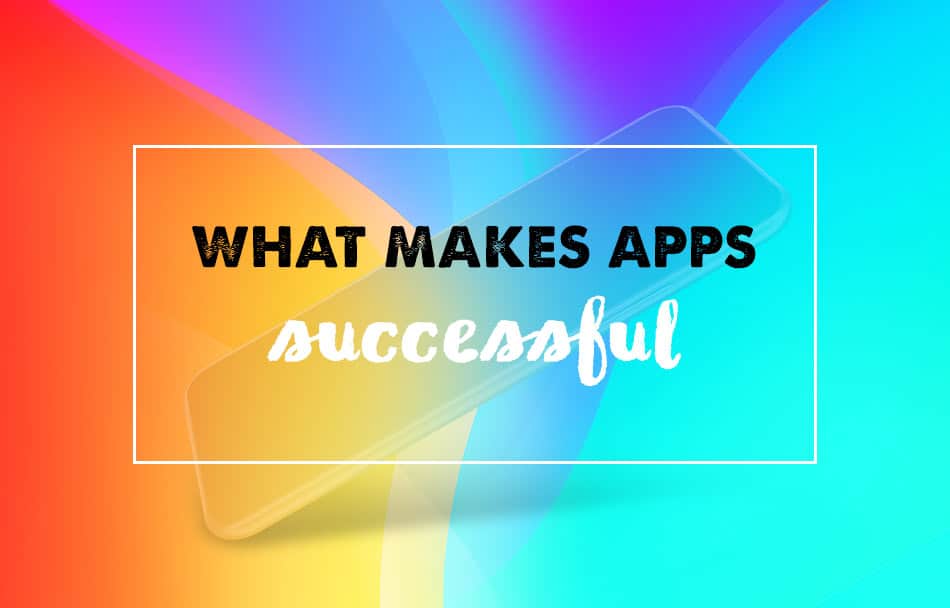As of the year 2017, there were over 6 million apps in existence. With all these apps out there, it is increasingly difficult to stand out from the crowd and get noticed by potential users. In order to make it in this space, one of the most fundamental steps one can take is to study what has worked for other successful apps and implement these lessons in their own apps.
Apps are fast becoming a more and more important part of our daily lives. Mobile has become a tool that shapes our society today. We get our news, shop and interact with one another using our phones, and it is mobile apps that make all these feats possible. According to a study carried out by Flurry, users spend about 90% of their phone time on mobile apps compared to browsing websites. Companies and businesses have found out about this power, and they’re clamoring to get a piece of the action. More and more apps are being created and released every day, all trying to cater to the needs of consumers as well as they can.
Let’s take a peek at the current Apple App Store top 10 to see what makes up a successful app.
- PUBG Mobile (Games)
- Fortnite (Games)
- YouTube (Photo & Video)
- Snapchat (Photo & Video)
- Instagram (Photo & Video)
- Messenger (Social Networking)
- Google Maps (Navigation)
- Facebook (Social Networking)
- Bitmoji (Utilities)
- Gmail (Productivity)
So what goes into coming up with a successful app? A quick look at any app store’s list of the best performing apps will reveal the answer to this question. There are a few striking similarities between these apps, and it is these factors that this article will focus on. Here is a look at the strategies one has to adapt when coming up with an app built for success from day one. What do successful apps do?
- Successful Apps Solve Problems
Identify your users’ needs and work towards making their lives easier. Make them believe they cannot live without your app and you will have created something special. Think big. Do your research thoroughly. If you cannot come up with something entirely original, pick a competitor and create a better version of their concept. Do not blindly imitate, because this is the fastest route to failure. Make your app relevant to your users’ lives and they will thank you for it.
- Be Unique
What do you have to offer that is not already being offered by hundreds of other similar apps? Give your customers value for the time they invest in your app and they will be loyal to you. What do you have to offer? Is it entertainment, utility or convenience? You should also make sure to do some thorough research on the ideas you have to ensure that the final product you get does what you intend it to do.
- Think iOS and Android
These are the two most popular mobile platforms in the world today. By cutting out one platform, you are essentially shutting out roughly half your potential user base. Initiate a cross-platform app development framework from as early in your design process as possible. Doing this will save you the headache that comes with having to develop two separate app versions for two separate platforms.
- Choose A Core Feature and Focus on That
Let your app do just one thing, and let it do that one thing really well. Do not pile unnecessary features on top of one another. This will only take away from your users’ experience and it is a definite recipe for disaster. Plus, if you focus all your energies on one thing, you can deliver exactly what your users want and know you did it as best as you could. Pick an action and perform it better than anyone else, and your app will become the go-to app for that specific activity. If users ask for more, give in to their demands in later versions, but always cater to their needs.
- Simplicity Is The Ultimate Sophistication
Keep your app clean and simple. Less is more. Try to make your app as efficient as possible, with the least number of actions possible needed to perform each action. If your app is cluttered and hard to understand, your users will abandon it without a second thought. Make the actions a user has to perform within your app predictable and repetitive. Make your user interface supplement your good user experience with simple navigation.
- Update It Regularly
You need to be able to take in your users’ needs and requests, adapt, iterate, and publish increasingly newer, better versions of your app. If you want to be successful, users need to know that you are constantly trying to make their lives easier. Ongoing maintenance, development, and updates are an integral part of this. Your app should always be up to date and relevant. Feedback tells you what you need to improve, what you need to include, and what you need to do away with.
- Allow Offline Functionality
Your users will probably not always be online 100% of the time. They may even come from countries that do not have the kinds of internet speeds you are used to. So do not let your app rely on an internet connection 100% of the time. Your app should function properly even without an internet connection.
- Niches
The best performing and successful apps fall into one of the following niches:
- Gaming
As of 2017, there were over 200 million active mobile phone gamers in the US alone. Almost 30% of every app ever created is a mobile game. These numbers are constantly going up all over the world, which means there is no shortage of demand.
The mere act of publishing a gaming app will however not guarantee success. The most successful gaming apps are those that were already established popular games before branching into the app market after their userbase demanded a mobile app adoption. Examples include PUBG and Fortnite.
- Photo and Video Platforms
The apps that succeeded in this space made it because they took almost impossible concepts and ran with them. YouTube and Snapchat became successful apps because they developed businesses around concepts that no one would have imagined would be as big as they were. Plus, they remain true to their original mission statements by not changing their objectives. The only development changes they implement are to help them stay relevant.
- Social Media and Networking
The most successful apps in this space were also pioneers in their industry. Just like photo and video platform apps, social media apps took unique concepts and made it their own. In the end, social media has become such a large part of our lives that it is difficult to imagine what life was before Facebook. These apps succeed because they keep a close eye on the behavior of their users, pick lessons from what they learn, and design solutions to meet these needs.
- Navigation and Productivity Apps
The most successful apps in this niche were already established players before branching off into the app market. Apps such as Google Maps and Gmail already existed in other forms before adopting mobile app forms. They established their stake and made their users believe they cannot live without them, building an unshakable trust with their userbase.
- Utility Apps
These types of apps usually owe their success to how they are handled very early on in their existence. If a utility app gets the right kind of marketing and publicity and an audience that is influential or an audience that will endorse the app to others, the app will gain momentum. This means the success of utility apps can be influenced by social media endorsements and word of mouth. The best example of a successful app in this space is Bitmoji.
These are just some of the strategies you can employ as you come up with your app. Do not forget to constantly test your app and to provide a feedback channel for your users to get in touch with you. Also, if possible, offer your app for free with strategic freemiums inside, because everyone loves free stuff.
The mobile app market is versatile, and nothing is straightforward. Its landscape changes quickly, and you have to figure out how to keep up with the trends. Your concept, target audience and how you market your app will have a direct relationship with how successful your app will be in the long run.















